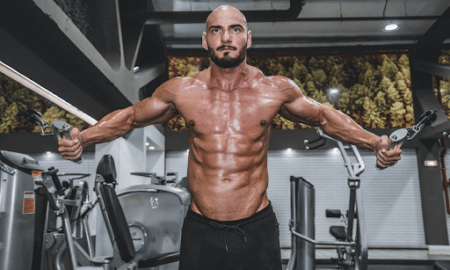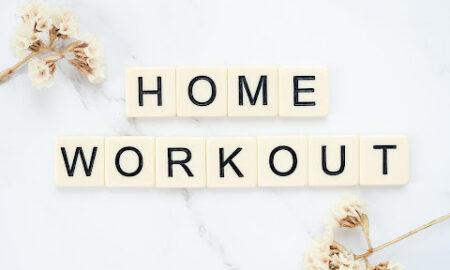The first thing I noticed when I pulled into my gym’s parking lot was that a group of older Body Masters machines was assembled out in front. Also out front was a large truck from which workers were unloading a full line of brand-new, high-tech machines. Though I confess to being excited, I was nowhere near as excited as I would have been years ago. For about two years I thought free weights were obsolete junk and machines—specifically, Nautilus machines—were the absolute best training tools an aspiring bodybuilder could use.
It all started in September 1987 as I began my freshman year at the University of California, Santa Barbara. I’d been lifting throughout high school at home, in my friend Paul’s attic for one school year and the local Boy’s Club in Waltham, Massachusetts. Once I got to UCSB, my first order of business, probably as important to me as buying my textbooks, was finding a place to train. There was a free campus gym at the time—inside a big trailer. It was filled with free weights but sickeningly crowded, and it had terrible ventilation—hot as hell and stinking of sweat and mildew. At the campus bookstore I’d picked up two books that would have a huge influence on me: The Nautilus Bodybuilding Book by Arthur Jones, and The Nautilus Advanced Bodybuilding Book by Ellington Darden, Ph.D. Being a typical impatient 18-year-old, I read the advanced book first. Both Jones and Darden were incredibly persuasive, and they convinced me that if muscle building was what I wanted, I needed to train on Nautilus machines. So instead of the free gym that had all the weights I would have needed, I paid to join the school’s Nautilus gym. There I followed the advanced routines—I’d been lifting for a few years—and started to make progress.
I lived in Venice in the summer of 1988 before heading back to Boston. I was transferring to Emerson College, and I stupidly missed a great opportunity because of my blind devotion to Nautilus. I walked into the old World Gym on Main Street and faced Joe Gold at the front desk. Joe founded both the Gold’s and World Gym chains, and training at his flagship location would have been an excellent crash course in bodybuilding. Though it wasn’t as flashy and loud as Gold’s Gym in Venice a couple of blocks away, a lot of stars trained at World in the late ’80s: Arnold, Lou Ferrigno, Samir Bannout and Robby Robinson, to name a few.
Me, the know-it-all 18-year-old punk, looked around and asked Joe, “Where are the Nautilus machines?” Gold was a blunt, no-nonsense guy. His gym had free weights and some great machines, some of which he had built himself—but no Nautilus.
“Why don’t you go find a Nautilus gym?” he asked, which was his way of telling me to get lost. So I did. During most of my sophomore year of college, I trained at the YMCA in Boston next to Northeastern University—because it had a full line of Nautilus equipment. In all that time my bodyweight went from about 145 to 155—not too spectacular for a teenager who really should have been growing pretty fast. I didn’t eat enough, of course, but that was starting to change. It wasn’t until after I competed in my first contest in March 1989 that I finally joined a different gym—a World Gym in Newton, Massachusetts, only a few miles from home. I started using both free weights and machines—and by the end of that year my weight was up to 175.
At last I realized that I’d been shortchanging myself by using machines only. Free weights are the training tools that have transformed the bodies of literally millions of men and women over the years, and they can never be replaced by machines. As much as I love some machine lines—like Hammer Strength—I would never again use only machines. Basics like squats, dumbbell and barbell presses, rows, curls and extensions will always produce results. It’s more difficult to master proper form on and control free weights, which is a big part of why they’re so effective. Simply put, they force you to work harder. No leg machine ever created will ever work you harder than a heavy set of squats for 10 to 12 reps. I gave all the new machines at my gym a try. They were interesting and definitely would be suitable as finishing movements after free-weight rows and chinups, but I’d never use any of those wonderful, brand-new high-tech machines as the foundation of any workout. They’re great adjuncts to free weights but not a replacement. Free weights will always be the meat and potatoes of training tools. Machines will always be the gravy.
Editor’s note: Ron Harris is the author of Real Bodybuilding: Muscle Truth from 25 Years in the Trenches, available at www.RonHarrisMuscle.com.




















You must be logged in to post a comment Login